
Review on 💦 Fibaro FGBHFS-101 Flood Sensor - Homekit Enabled Water Leakage Detector, White with Temperature Monitoring by Chris Castro

Good water leak detector
For reference I have used these two water leak detectors: Lyric Wi-Fi Water Leak & Freeze Detector and D-Link DCH-S160 mydlink Wi-Fi Water Sensor. I also got the chance to experiment with the upcoming Delta leak detector at CES. Fibaro Water Leak Detector is not as good as the three above, but it has some good qualities. Fibaro has 3 gold dots on the bottom of the detector. If these cables come into contact with water, the Fibaro leak detector sounds an alarm and you will receive a push notification from Homekit. If there is water under this leak detector but does not touch any of these 3 gold dots, the alarm will not work. Also, if a leak falls on the Fibaro and water runs out of the device, the water can drain away without touching these 3 gold wires. A distinctive feature of Fibaro is that the alarm is triggered almost immediately when a leak is detected. While other leak detectors mentioned above take 5 to 20 seconds to warn the user. The Homekit notification also arrives fairly quickly, but that depends on whether you have a good Bluetooth connection with your Apple TV or iPad in hub mode. Because Fibaro uses Bluetooth instead of Wi-Fi, for a very large room you might need more than one Apple TV or iPad in hub mode to pass that Bluetooth signal to your phone or whatever iOS device you have with you carry around. In a small apartment this is not a problem. For a building 3,000 to 5,000 square feet or larger, you will need multiple Apple TVs/iPads to tunnel this Bluetooth signal. Additionally, if the Homekit trigger fails due to a Bluetooth connection error, Homekit has a delay of about 10 seconds before Homekit retries the notification. Therefore, if there is a leak, there may be a delay before you are notified of this product. To test it, I put the Fibaro in a sink with some water in it. As soon as I put the Fibaro in the sink, the alarm went off and I got an Apple Homekit notification. The Elgato Eve app has been configured to turn on the lamp automatically when a leak is detected. It worked great. When the Homekit notification arrived, the light came on too. When I took the Fibaro out of the sink, the alarm went off even though the floor was completely wet. That means those golden dots must actually be surrounded by water, not just wet. There was another automatic installation that turned off the lamp when the leak stopped. However, this test failed. Not sure if Homekit or Fibaro is the problem but when the leak stopped the notification wasn't sent so the light stayed on. Conversely, if the Honeywell and Dlink leak detectors are even slightly damp, the alarm will go off and continue until part of the cable is completely dry. So if water seeps down the slope, there is a chance that the Fibaro leak detector will not work. In fact, water must accumulate under the Fibaro device for a leak to be detected. Also, the Fibaro device has a temperature sensor. The safe temperature range can be set with Homekit Automation. You can do this either through the Automation tab of the Apple Home app or through Elgato Eve's rules engine. Through these interfaces you can say that in the range from 49 to 89 degrees everything is considered normal, but everything outside this range is bad and the user should be warned. However, I couldn't get it to work either. Even though the automation was configured, it just wasn't working. Honeywell's leak detector has this feature and works great. In addition, Honeywell also has a humidity sensor. So with Honeywell I can tell that the safe humidity range is 20-70% and warn me if it's outside of that range. Instead, Fibaro has an accelerometer that detects when the device moves and sends an alert through the Fibaro app. I would argue that for a leak detector, a moisture sensor would be more useful than an accelerometer for tamper detection. Furthermore, Fibaro has only 3 ways to notify the user about problems: Device Alert, Push Notifications and Home Automation. Honeywell and Dlink notify you via alarm, push notification and email. Also, Dlink can be integrated with IFTTT, so you can integrate it with other services. So you can probably find a way to have Dlink alert you via text message if you wish. For me, email is an important thing that Fibaro product lacks. Push notifications are good, but some IOS push notifications do not work abroad. Even if no one is home to hear the alarm, it doesn't matter if it goes off. With email, the chances of a user being notified are much higher than any other notification Fibaro currently has. In addition, Honeywell allows the user to enter the e-mail address of any other person who should be notified by e-mail into the application. So if you're out of town and want some of your neighbors to know if your house has a leak, you can just enter their email addresses into the app. There is no such equivalent in the Fibaro app. Apple Homekit requires you to invite your neighbors to gain access to your Homekit devices, which isn't always what you want. If your neighbors are involved in the Apple ecosystem, it may be appropriate to give them access to your Homekit devices. However, if they are Android users who are my neighbors then this is not an option and email is the best way. So Fibaro not having an email option is a big disadvantage for me.
- Great for me
- No instructions
New products
Comments (0)
Top products in 🚨 Household Sensors & Alarms
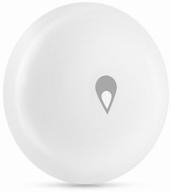
Wireless Aqara Water Leak Sensor white CN

12 Review
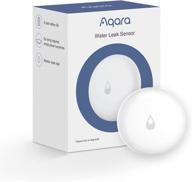
Aqara Water Leak Sensor: Wireless Mini Flood Detector for Alarm System & Smart Home Automation - Works with IFTTT

31 Review
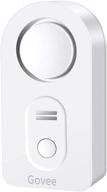
🚰 Govee Water Detectors, Adjustable 100dB Audio Alarm Sensor, Highly Sensitive Leak and Drip Alert, Ideal for Kitchen Bathroom Basement (Battery Included)

9 Review
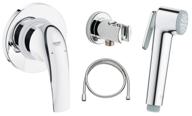
Hygienic shower Grohe BauCurve 123072, chrome

10 Review
Another interesting products

🍽️ S.O.S. Rations Emergency 3600 Calorie Food Bar (Cinnamon & Coconut, 2 Pack)

8 Review
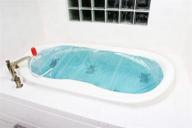
🌊 AquaPod Kit 2.0: BPA-Free & Made in USA! Emergency Water Storage Container, Hurricane Survival (65 gallons) - Great for Larger Tubs!

8 Review

🌧️ Premium Quality Disposable Rain Ponchos for Adults / Kids (6 Pack) - 50% Thicker Emergency Ponchos for Ultimate Waterproof Protection

8 Review

Clear Disposable Emergency Rain Poncho with Hood for Adults - 20 Pack

8 Review

